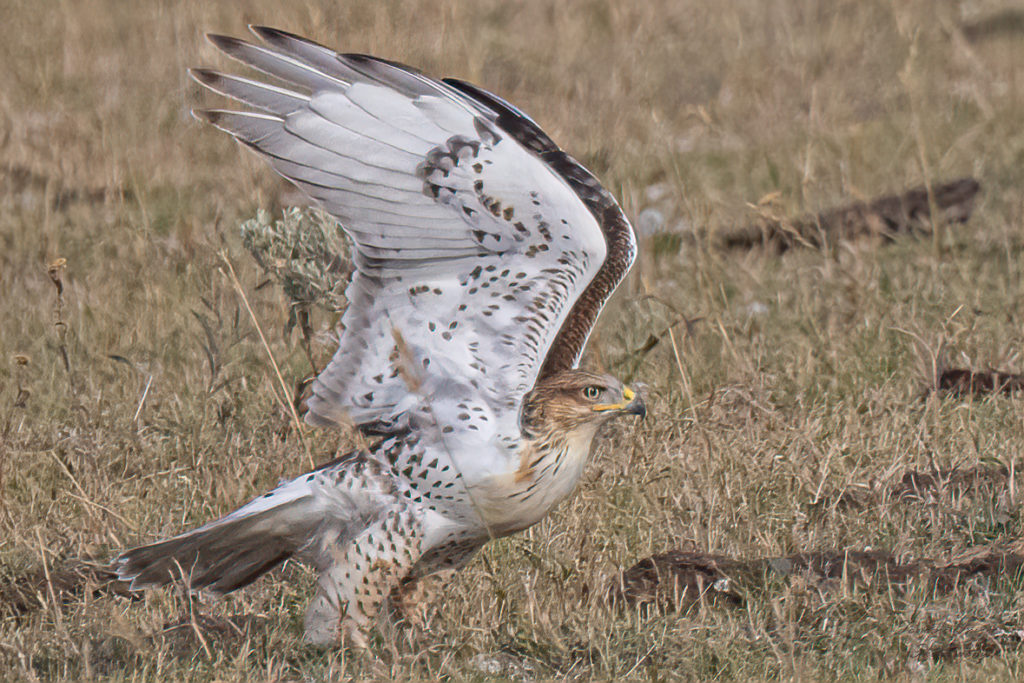By Lorraine Snipper
I was pondering about hawks for the past few weeks, looking forward to my return to Island Park, and anticipating re-acquainting myself with the hawks on the back roads.
I am used to seeing Swainson’s hawks and red-tailed hawks, but nothing prepared me for the beauty I encountered with my first discovery of a light morph ferruginous hawk. For a short primer (I promise I won’t get deep into the weeds here), the ferruginous hawk, rough-legged hawk and golden eagle are the only raptors with feathers that extend all the way down their legs to the toes. A review of the maps would seem to me to indicate that the rough-legged hawks summer farther north than Island Park (so not really in our area), while the ferruginous may be seen and is recorded to breed in our area, among other areas in the mountain west. It is the only raptor endemic to the North American continent. It breeds as far north as Canada, and winters as far south as Mexico, while there is a year-round resident population in the area in the middle.

Ferruginous hawks may be seen on the open rangelands, which is where I first spotted one. They sit on the ground, often near a ground squirrel burrow, and wait for the rodents to come out. Once a rodent nears the surface of the burrow, the hawk rises into the air and pounces upon the unsuspecting animal, even before it reaches the surface. We all know that there are a lot of ground squirrels in our area, so plenty of food for the hawks! They also eat snakes, young rabbits, and other decent-sized prey. They can be seen flying a few yards above the ground, scanning for prey.

I haven’t seen ferruginous hawks around for an entire summer, so ours is not likely a resident population, but rather a breeding population. So when you are driving out on the back roads, near cattle grazing ground, sagebrush fields or other open areas, watch for these beauties. Maybe you will be lucky enough to see one (light or dark morph) teaching its juvenile ferruginous hawks to hunt! I am including photos of the beautiful light morph that I was lucky enough to see!
Sources: Wikipedia and Audubon Field Guide
